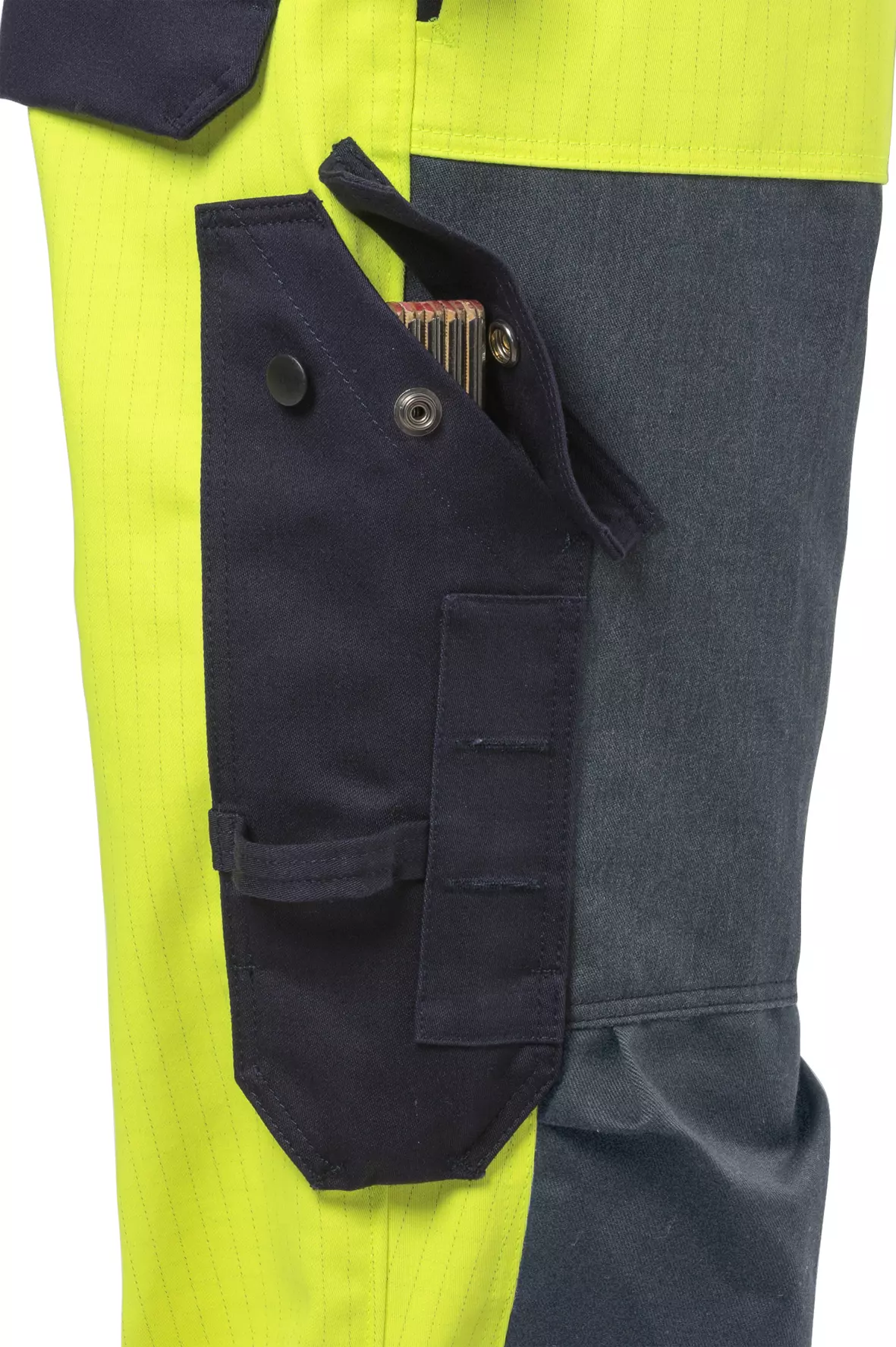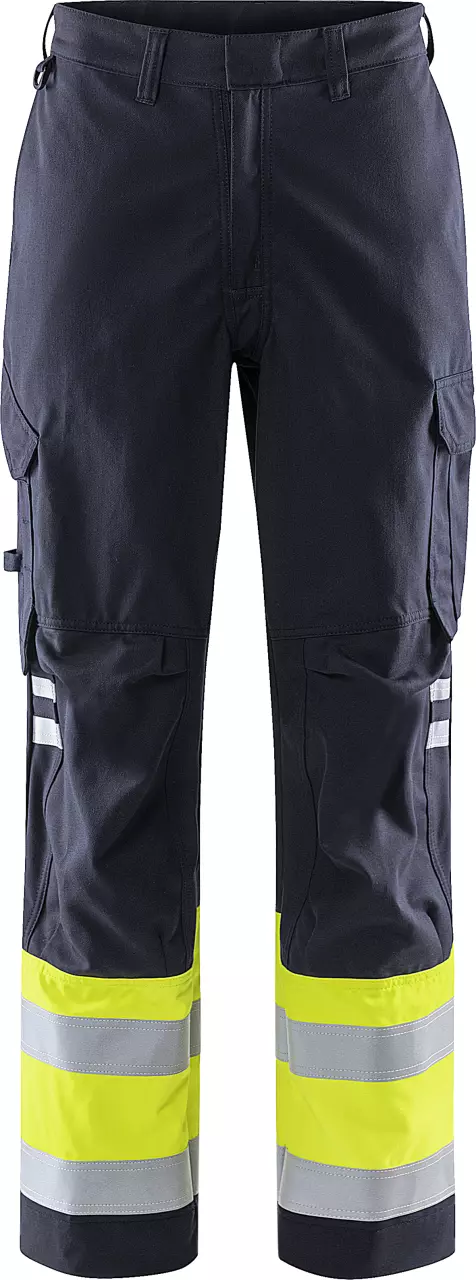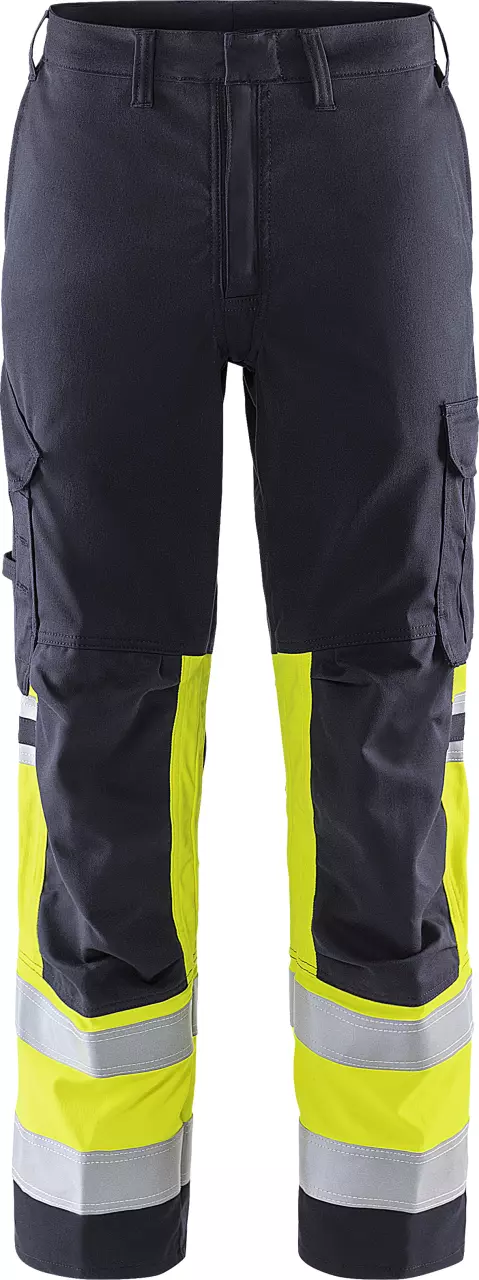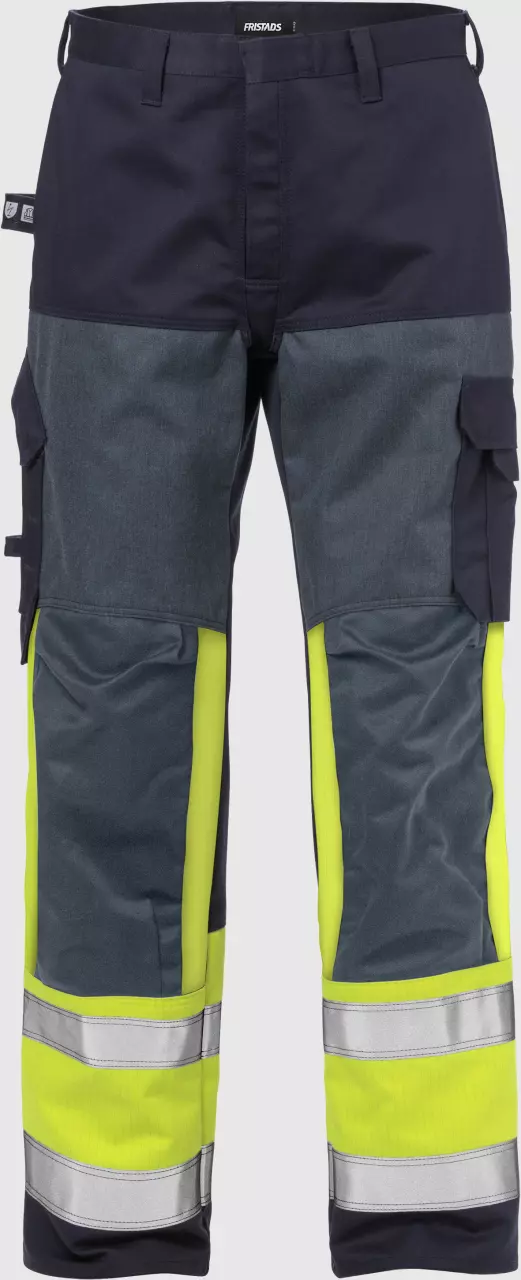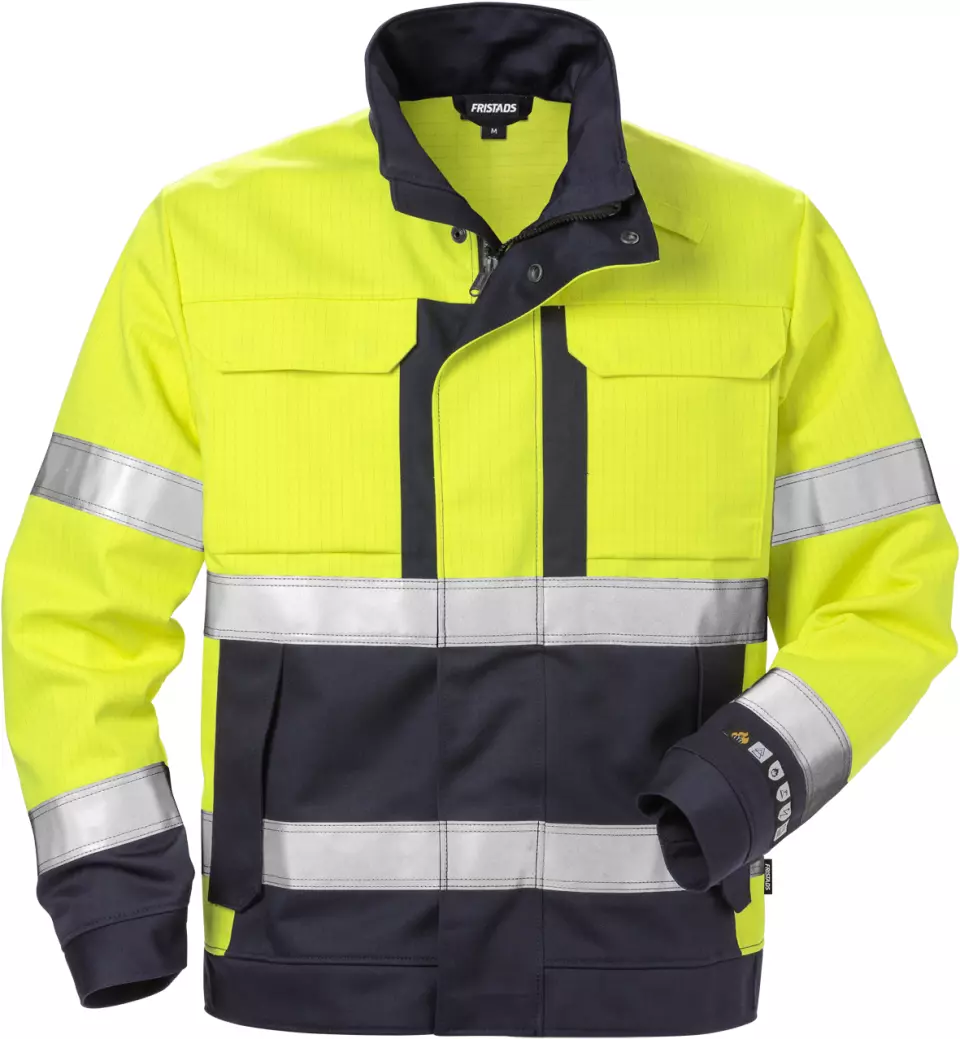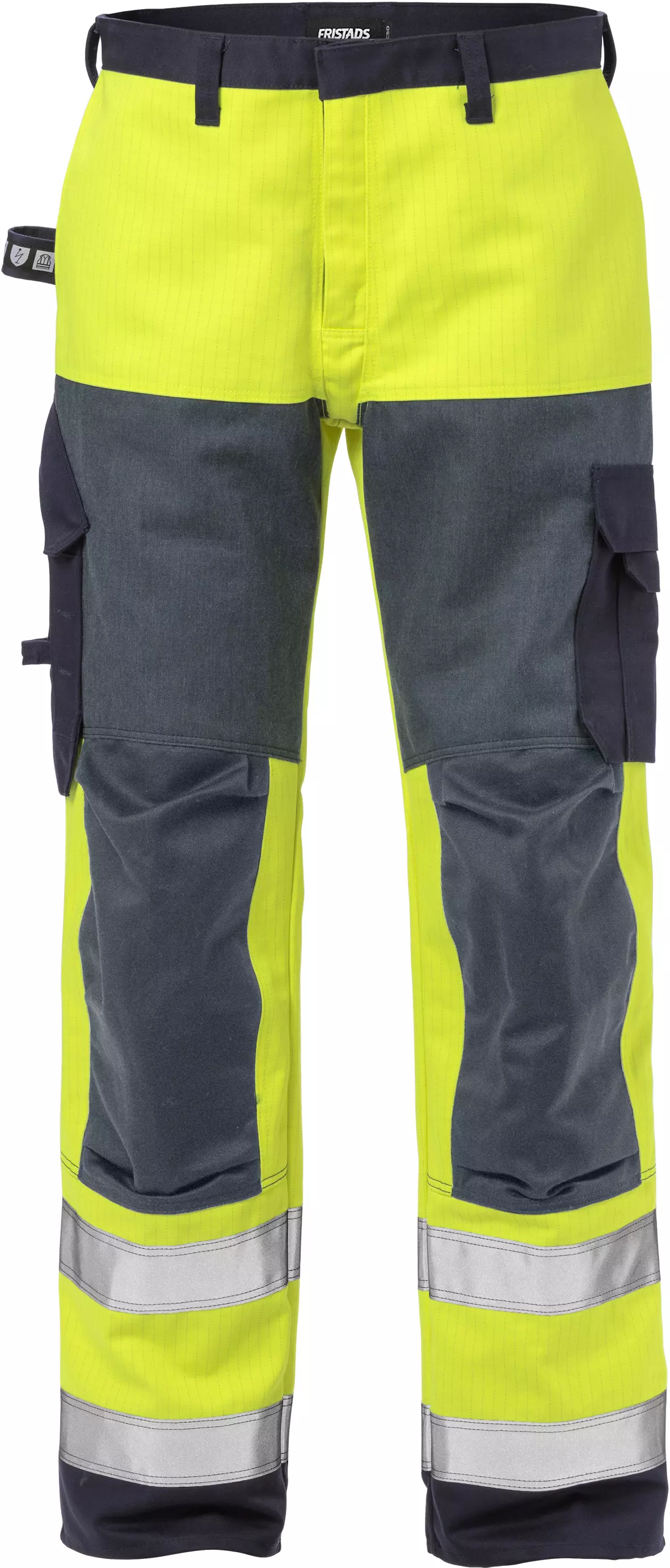
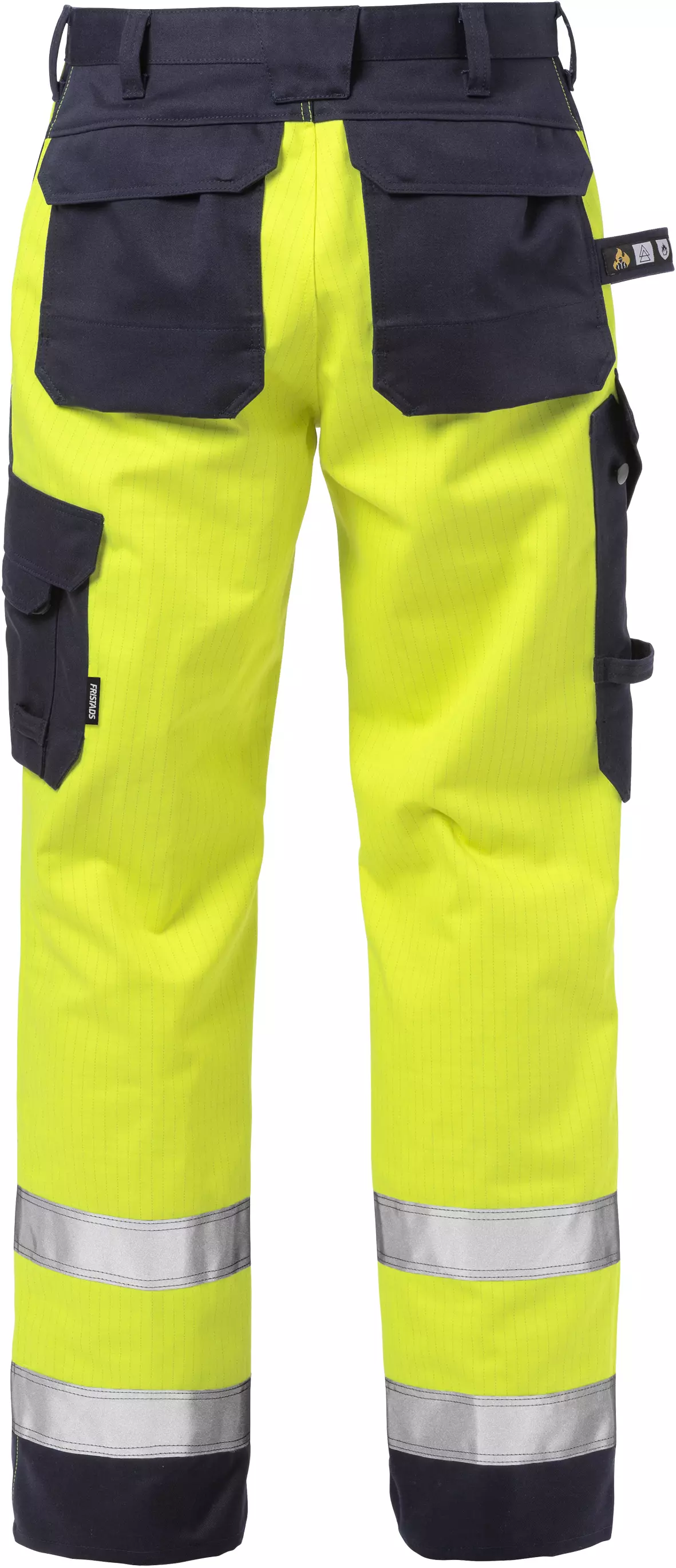

Features You'll Love
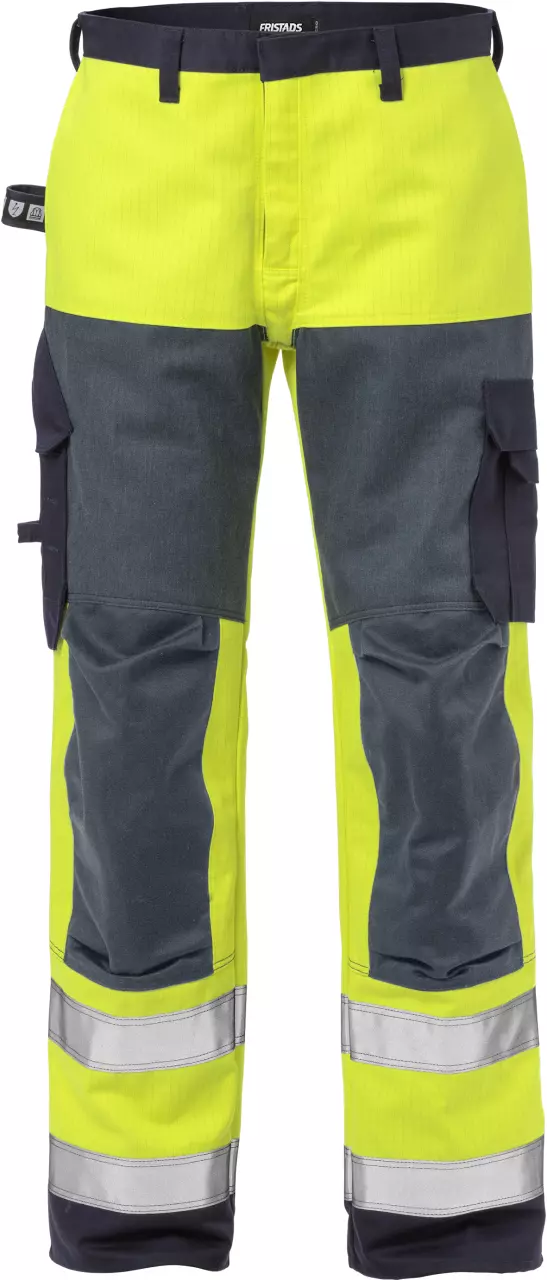
Pocket System · Knee Pad Pockets
Integrated knee pad pockets provide cushioning and protection, letting you work comfortably and safely on your knees.
Fristads
Flame Resistant High Vis Trousers Class 2 2585 FLAM
Flame Resistant High Vis Trousers Class 2 2585 FLAM
4.9 / 5
156,20 €
Choose size
Free delivery
Features You'll Love

Pocket System · Knee Pad Pockets
Integrated knee pad pockets provide cushioning and protection, letting you work comfortably and safely on your knees.
Product description
Flame-retardant high-visibility pants designed for demanding industrial environments requiring arc flash, flame, and welding protection. The pants are made from a cotton-polyester blend with antistatic fiber and reinforced with CORDURA® and aramid materials in critical areas. The product meets multiple safety standards and is approved for welding use and certified according to ÖKO-TEX® standard.
Product features:
- Two front pockets
- Two CORDURA®-reinforced back pockets with flap and hidden snap closure
- Double-reinforced crotch seam
- Hammer loop
- CORDURA®-reinforced ruler pocket with flap, snap closure and button and loop for knife
- Thigh pocket with flap and hidden snap closure, phone pocket with flap and velcro closure, D-ring
- Inward-opening aramid-reinforced knee pockets with height adjustment
- Aramid-reinforced thigh panels
- CORDURA®-reinforced leg hems
Technical specifications:
- Material composition: 75% cotton, 24% polyester, 1% antistatic fiber
- Reinforcements: 74% cotton, 25% para-aramid, 1% antistatic fiber
- CORDURA® reinforcements: 79% flame-retardant cotton, 20% polyamide, 1% antistatic fiber
- Weight: 365 g/m², reinforcements 340 g/m²
- Approved after 50 washes
- Tested according to industrial washing standard ISO 15797
Standards:
- EN 61482-1-2 APC 1
- EN 61482-1-1 ELIM: 8 cal/cm²
- EN ISO 11612 A1 B1 C1 E2 F1
- EN ISO 11611 A1 class 1
- EN 1149-5
- EN ISO 20471 class 2
- EN 14404 together with knee protectors 124292
- ÖKO-TEX® certified
